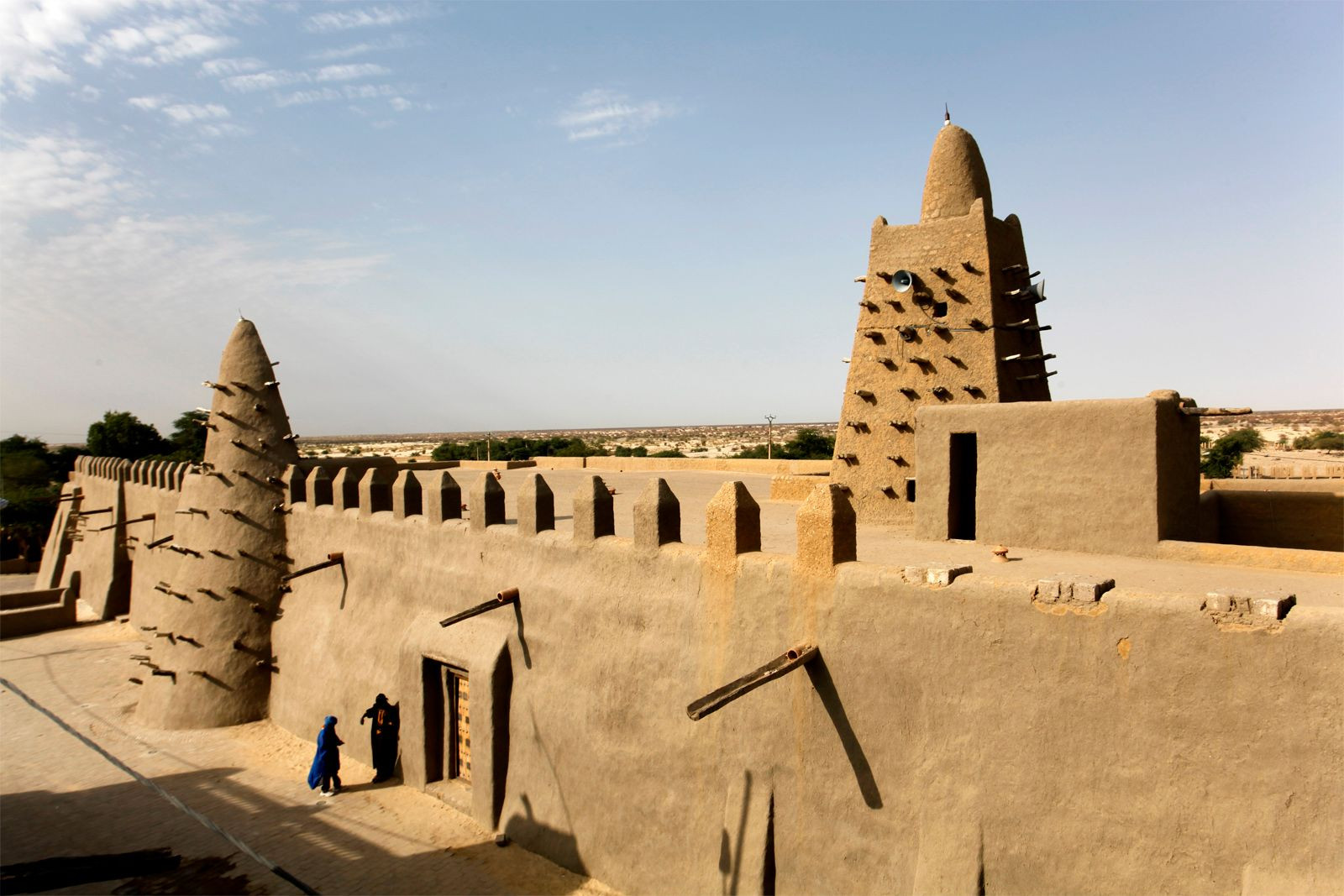Timbuktu, a name synonymous with remote and mysterious places, holds a rich history as a significant trading post and a beacon of Islamic culture. But where is Timbuktu, Mali exactly? This fabled city is nestled in West Africa, in the country of Mali. Situated on the southern edge of the vast Sahara Desert, Timbuktu lies approximately 8 miles (13 kilometers) to the north of the Niger River, a crucial waterway that historically connected the region.
This unique geographic location at the crossroads of desert and river contributed immensely to Timbuktu’s historical importance. Designated as a UNESCO World Heritage site in 1988, Timbuktu stands as a testament to a vibrant past, even though it was placed on the List of World Heritage in Danger in 2012 due to regional conflict.
The Strategic Location of Timbuktu
Timbuktu’s story begins around 1100 CE when Tuareg nomads, who traversed the Sahara, established it as a seasonal camp. Its location was no accident. Positioned where the harsh desert met the life-giving Niger River, Timbuktu became a natural hub for trade. This meeting point facilitated the exchange of goods between North Africa, the Sahara, and sub-Saharan Africa. Various tales surround the origin of the city’s evocative name, one suggesting it honors an old woman, Tomboutou, who managed the camp while the Tuareg were away. Her name, possibly referencing a physical characteristic, became etched in history as the name of this remarkable city. By the late 13th or early 14th century, Timbuktu’s strategic value led to its incorporation into the burgeoning Mali Empire.
 The Great Mosque of Timbuktu, a historical landmark in Mali
The Great Mosque of Timbuktu, a historical landmark in Mali
Timbuktu: A Flourishing Center of Trade and Islamic Learning
The 14th and 15th centuries marked Timbuktu’s golden age. It blossomed into a pivotal center for the trans-Saharan trade, particularly in gold and salt, two highly valued commodities. Beyond commerce, Timbuktu also emerged as a significant intellectual and religious center of the Islamic world. The city became home to three of West Africa’s oldest and most revered mosques: Djinguereber, Sankore, and Sidi Yahia.
The reign of Mansa Musa, the Mali emperor, in the 14th century, further cemented Timbuktu’s status. Following his famous pilgrimage to Mecca in 1324, Mansa Musa commissioned the construction of the grand Djinguereber Mosque and a royal residence. He also brought the Andalusian architect, Abu Ishaq al-Sahili, to design the Sankore mosque, around which the renowned Sankore University grew. This university, alongside other centers of learning, attracted scholars from across the Islamic world, making Timbuktu a vibrant hub of knowledge and scholarship. The innovative construction of the Sankore mosque, incorporating wood into its mud walls, ensured its longevity and facilitated yearly repairs, a testament to the architectural ingenuity of the time. By 1450, Timbuktu’s population swelled to approximately 100,000, including an estimated 25,000 scholars, many of whom had studied in prestigious centers like Mecca and Egypt.
From Songhai Rule to European Exploration and Beyond
While the Tuareg briefly regained control in 1433, their rule was from afar, and Timbuktu continued to thrive as a center of trade and learning. However, in 1468, the Songhai ruler Sonni Ali seized control of the city. While initially hostile to the Muslim scholars, his successor, Muhammad I Askia, the first ruler of the Askia dynasty, valued them as advisors. During the Askia period (1493–1591), Timbuktu reached the zenith of its commercial and intellectual influence. Merchants from distant North African cities like Ghadames and Augila flocked to Timbuktu, exchanging salt, cloth, and horses for gold and slaves.
This era of prosperity ended when Morocco conquered Timbuktu in 1591. The subsequent instability led to the decline of the city. Scholars faced persecution, and attacks from groups like the Bambara, Fulani, and Tuareg became frequent.
In the 19th century, European explorers, drawn by tales of Timbuktu’s wealth and mystery, finally reached the city. Gordon Laing, a Scottish explorer, was the first in 1826, followed by René-Auguste Caillié of France in 1828, who famously returned to Europe with firsthand accounts of Timbuktu. Later, in 1853, German geographer Heinrich Barth also visited and documented his experiences. French colonial forces captured Timbuktu in 1894, and it became part of French Sudan, later Mali, upon its independence in 1960.
Timbuktu in the 21st Century: Preservation and Challenges
Today, Timbuktu serves as an administrative center within Mali. Efforts to restore and preserve its invaluable cultural heritage, particularly its ancient mosques, began in the late 1990s. However, the city faced a serious threat in 2012 when Tuareg rebels and Islamic militants seized control. These militants, adhering to a strict interpretation of Islamic law, damaged and destroyed significant historical monuments and artifacts, including sacred tombs within the Djinguereber and Sidi Yahia mosques, deeming them idolatrous.
Following the expulsion of the militants in 2013, reconstruction and restoration work commenced. Despite the challenges, Timbuktu remains a powerful symbol of West Africa’s rich history and Islamic heritage. Its location, once the source of its prosperity and prominence, continues to place it at the heart of Mali, a city striving to preserve its legendary past while navigating the complexities of the present. So, to reiterate, Timbuktu, Mali is located in West Africa, on the edge of the Sahara Desert, a city with a history as captivating as its name.


